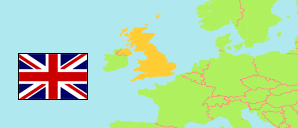
United Kingdom: London
Administrative Area
The population development of Greater London.
| Name | Status | Population Census 2001-04-29 | Population Census 2011-03-27 | Population Census 2021-03-21 | |
|---|---|---|---|---|---|
| Greater London | Administrative Area | 7,172,091 | 8,173,941 | 8,799,728 | → |
| London | Region | 7,172,091 | 8,173,941 | 8,799,728 |
Contents: Settlement
The population of the London built-up area.
| Name | Status | Administrative Area | Population Census 2001-04-29 | Population Census 2011-03-27 | Population Census 2021-03-21 | |
|---|---|---|---|---|---|---|
| London | Built-up Area | Greater London | 7,151,354 | 8,150,882 | 8,776,535 | → |
Source: UK Office for National Statistics (web).
Explanation: All population figures and depicted boundaries are based on output areas officially assigned to the 2022 built-up areas. Output areas often include some unbuilt parts. However, tabulated area figures refer to (typically smaller) actual built-up areas in order to present a more realistic population density. Some of the older population figures are approximate values.